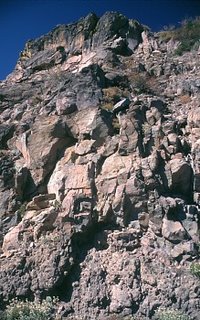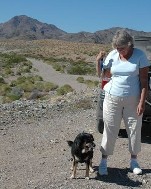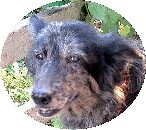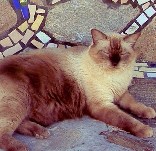Close view of andesite lava flow
Brokeoff Volcano, California

Andesite is a gray to black volcanic rock with between about 52 and 63 weight percent silica (SiO2). Andesites contain crystals composed primarily of plagioclase feldspar and one or more of the minerals pyroxene (clinopyroxene and orthopyroxene) and lesser amounts of hornblende. At the lower end of the silica range, andesite lava may also contain olivine. Andesite magma commonly erupts from stratovolcanoes as thick lava flows, some reaching several km in length. Andesite magma can also generate strong explosive eruptions to form pyroclastic flows and surges and enormous eruption columns. Andesites erupt at temperatures between 900 and 1100° C.
Photograph by S.R. Brantley on 27 September 2000

This cross section of an andesite lava flow shows internal features that are commonly found in thick flows. This flow is about 40 m thick. Thick flows often consist of massive interiors with columnar or blocky jointing, which is related to the slow rate of cooling within the flows. The tops and bottoms of thick flows, however, typically are surrounded by an irregular layer of blocky rubble (note base of flow, left). These rubble layers result from cooled, spiny lava on top of and along the steep front of an advancing flow. As the jagged flow front creeps forward, it steepens until small and large sections break off and roll ahead of the flow; the repeated collapse of the flow front produces a rubbly layer over which the flow moves.
Did you know?
The word andesite is derived from the Andes Mountains, located along the western edge of South America, where andesite rock is common.
Andesite was the main rock type erupted during the great Krakatau eruption of 1883.
See discussion at the post on the Basalts for descriptions and examples of these minerals.
Plagioclase feldspar
Pyroxene
Clinopyroxene
Orthopyroxene
Even Olivine at the lower silica levels
Hornblende







No comments:
Post a Comment